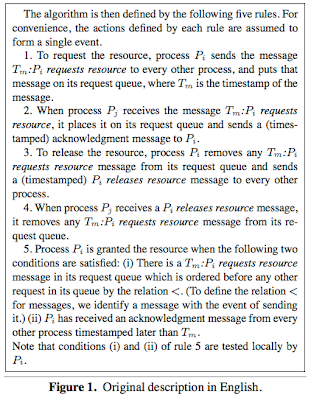From Clarity to Efficiency for Distributed Algorithms

Y. A. Liu, S. D. Stoller, B. Lin, M. Gorbovitski, Appeared in OOPSLA'12. This paper describes a high-level language, DistAlgo, for clear description of distributed algorithms (e.g., Paxos, mutual execution). In contrast to embarrassingly parallel tasks which involve very regular and simple synchronization patterns (e.g., MapReduce tasks), distributed algorithms generally involve complex and tight synchronization patterns. DistAlgo specifies these complex synchronization conditions via using logical quantifications over message histories of processes involved in the algorithm. But, unfortunately, this turns out to be extremely inefficient if executed straightforwardly: each quantifier will cause a linear factor in running time, and any use of the history of messages sent and received will cause space usage to be unbounded. To address this inefficiency, this paper focuses on optimizing implementations of DistAlgo programs by i...





